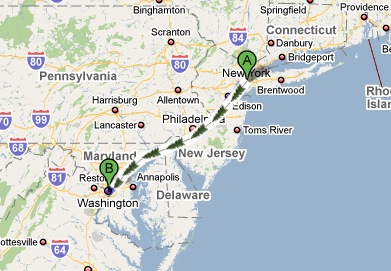The End of Blueprints
We’re big advocates of “going paperless.” Our desks are free of folders, pens, printers and sticky notes. There’s not a single TPS report to be found. We’re also big advocates of software. So, when a visitor to our website shared their concern about the paper waste from printing blueprints, we were intrigued. Can estimating and takeoff software end the destruction of forests (or at least save a few thousand trees)?
A quick Google search didn’t uncover the data we were looking for. So we decided to don the detective caps ourselves. After talking with a local repographics service, and making a few calculations, we discovered some startling statistics: 42,000 trees are killed each year to print blueprints. Laid end to end, this is the distance from New York City to Washington DC!
](https://software-advice.imgix.net/wordpress/blog_images/Tree-Map.001-001.jpg)
37 Million Blueprints Are Printed Every Year
Before construction begins on a job site, blueprints will be printed and re-printed numerous times over by architects, project managers, building owners, engineers and contractors. Our local repographics shop gets an average of 35 print requests a day from this crowd. Before the economy took a dip, this number was closer to 80.
For a single request, the shop may be asked to print one blueprint, or up to 300, depending on the size of the project. So on the low end, this shop prints off 12,600 (35/day) blueprints a year.
Reprography – the practice of copying and reproducing documents and graphic material – is a 3,000-company industry in the United States. Our local shop is considered a smaller shop, so assuming every reprographics company prints 12,600 blueprints a year would be a conservative estimate. Still, at this rate, this means the entire industry prints 37,800,000 blueprints every year.
Using the standard architectural size of a blueprint (24″x36″) as our unit of measure, along with information we gathered from Conservatree.com, we determined it would take 42,000 trees measuing 40 feet high and 6 – 8 inches in diameter to produce this much paper. Aside from the deforestation, there is additional pollution from the paper factory, vehicles to transport the paper, ink cartridges used at the printing shops and more.
Digital Plans Require Zero Paper
Blueprinting is an outdated practice; it is a 167-year old technology. Today, the same blueprint-based activities can be achieved using onscreen takeoff software. Contractors can view plans, measure lengths and volumes, and markup plans on a computer screen. Plans are electronic – either PDF or CAD files – and can be emailed around without printing a single sheet.
When integrated with construction cost estimating software, contractors can take a measurement, then calculate material quantities and volumes. For example, simply trace an interior wall with your mouse or digital pen, then the estimating software will tell you how many 2x4s, sheets of drywall, screws and insulation is needed to build the wall. The software also provides accurate material and labor pricing for your region.
In turn, this allows contractors to determine the cost of a job, then bid on the project. It reduces miscalculations and helps contractors avoid over or under bidding a job. This is the key to job profitability.
Cost of Software vs Cost of Paper Plans
While the initial software investment is larger than the $3 cost of a blueprint, the software will pay for itself by eliminating printing needs and improving the speed and accuracy of estimating jobs. Most estimating and takeoff software costs between $1,000 and $10,000 depending on number of licenses, feature and function requirements, and construction trade (e.g. earthwork, mechanical, electrical, etc). Here’s a simple example to understand how quickly software could pay for itself:
Let’s say your commercial construction firm bids on 100 jobs a year. For each job you print off 10 blueprints. At $3 a print, you’re looking at a $3,000 expense just for blueprints. This is the same investment you would make for the one-time purchase of software.
100 jobs per year X 10 blueprints per job X $3 per print = $3,000 OR 1 software license
Incentives for Construction Software Adoption
For an industry that follows the mantra “if it aint broke, don’t fix it,” it will be tough to change construction companies blueprint habits. Going paperless for the sake of saving our planet is not going to drive change; it has to make dollars and sense.
So what will be the impetus for change? For starters, we think federal incentives could help. Just as the government is handing out incentives for doctors that switch from paper charts to electronic medical records, there could be an incentive for construction companies to migrate from blueprints to software.
Secondly, we think the US Green Building Council should create a LEED credit for builders using software instead of blueprints. This credit would be appropriate for the existing “Innovation in Design” category. It could be awarded to companies that use software in place of blueprints to carry out pre-construction activities.
Finally, there need to be incentives for the 3,000 reprographics companies to move from blue printing serivces to cost estimating services. This will obviously be a tough sell as changing business models is not easy. However, the business model does work, and one might argue it is more profitable because of lower operating costs (no ink, no paper, no purchasing and maintenance of expensive plotters, etc).